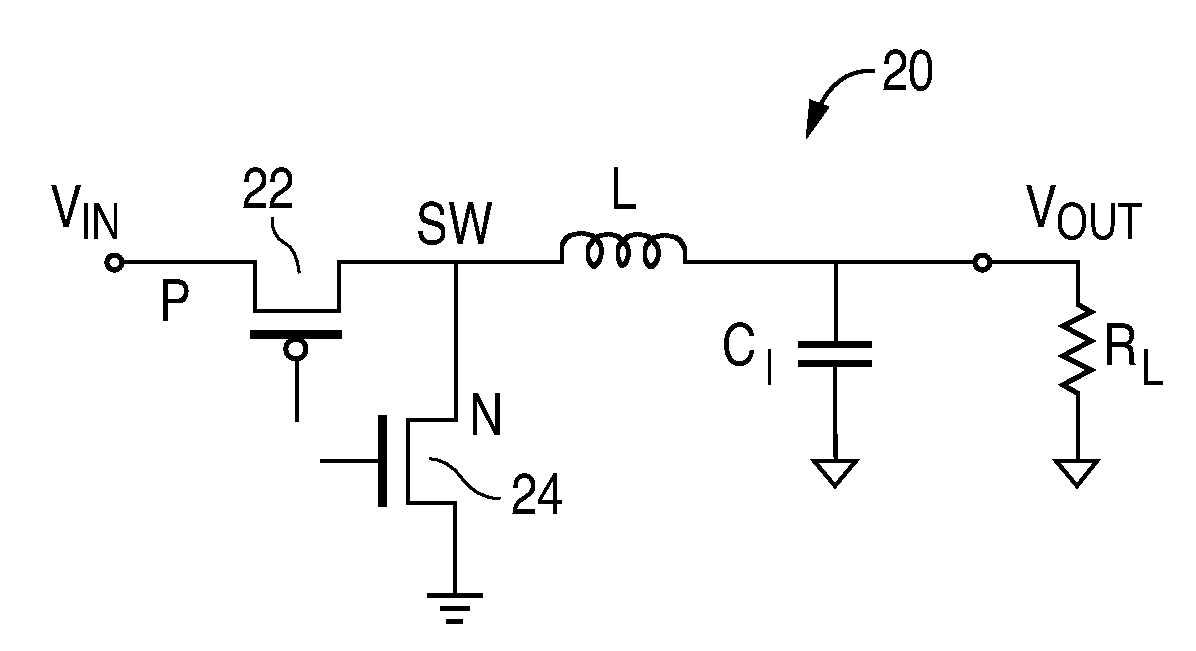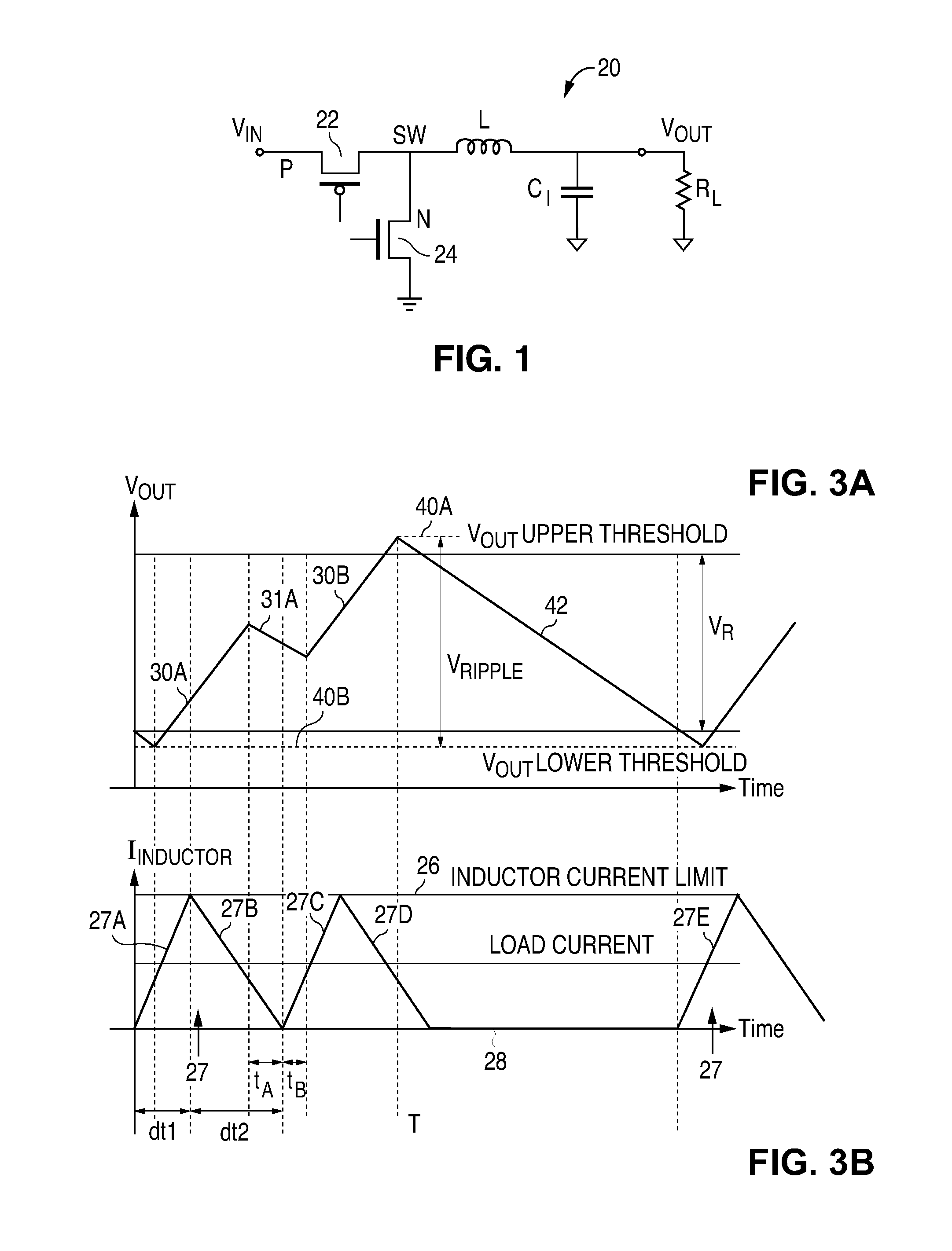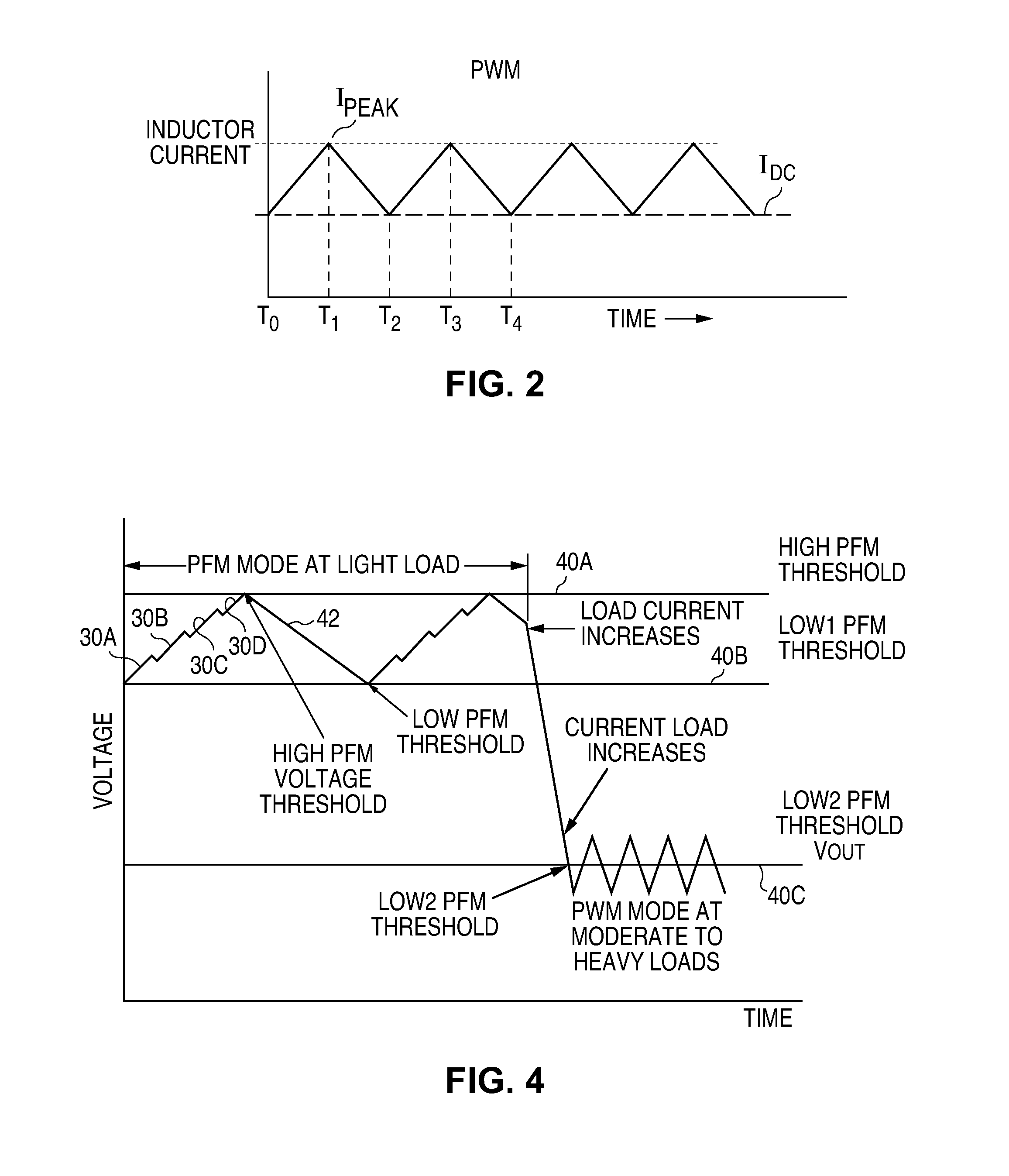Control for switching between pwm and pfm operation in a buck converter
a buck converter and control technology, applied in the direction of electric variable regulation, process and machine control, instruments, etc., can solve the problems of reducing the switching frequency and improving efficiency, and the pwm converter optimized for mid and high load current may not be very efficient at lowering load current, so as to reduce the loss of ac inductance, the effect of reducing the rms inductor curren
- Summary
- Abstract
- Description
- Claims
- Application Information
AI Technical Summary
Benefits of technology
Problems solved by technology
Method used
Image
Examples
Embodiment Construction
[0033]Referring again to the drawings, FIGS. 5A and 5B further illustrate the operation of prior art mode control circuitry based upon perceived measurements of the average load current. As previously noted, the specified load current level for switching from PFM to PWM operation is determined by selection of the peak inductor current 26 depicted in FIG. 3B. However, in either mode, a peak current detector current measurement of Ipeak / 2 does not reflect the actual average load current.
[0034]FIG. 5A shows an exemplary inductor current waveform 46 during PWM operation. Current level Ipeak, as previously noted, is specified in connection with PFM operation, and is used by the mode control circuitry for switching between the two operating modes. Ideally, when the average inductor current in the PFM mode has increased to Ipeak / 2, the mode will change to PWM and, conversely, when the average inductor current has dropped to Ipeak / 2 in PWM, the mode will change to PFM. Inspection of wavefor...
PUM
 Login to View More
Login to View More Abstract
Description
Claims
Application Information
 Login to View More
Login to View More - R&D
- Intellectual Property
- Life Sciences
- Materials
- Tech Scout
- Unparalleled Data Quality
- Higher Quality Content
- 60% Fewer Hallucinations
Browse by: Latest US Patents, China's latest patents, Technical Efficacy Thesaurus, Application Domain, Technology Topic, Popular Technical Reports.
© 2025 PatSnap. All rights reserved.Legal|Privacy policy|Modern Slavery Act Transparency Statement|Sitemap|About US| Contact US: help@patsnap.com



